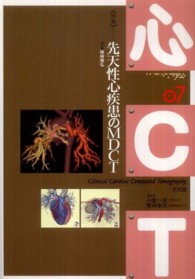Full Description
The realisation that signed languages are true languages is one of the great discoveries of linguistic research. The work of many sign language researchers has revealed deep similarities between signed and spoken languages in their structure, acquisition and processing, as well as differences, arising from the differing articulatory and perceptual constraints under which signed languages are used and learned. This book provides a cross-linguistic examination of the properties of many signed languages, including detailed case studies of Hong Kong, British, Mexican and German sign languages. The contributions to this volume, by some of the most prominent researchers in the field, focus on a single question: to what extent is linguistic structure influenced by the modality of language? Their answers offer particular insights into the factors that shape the nature of language and contribute to our understanding of why languages are organised as they are.
Contents
1. Why different, why the same? Explaining effects and non-effects of modality upon linguistic structure in sign and speech Richard P. Meier; Part I. Phonological Structure in Signed Languages: 2. Modality differences in sign language phonology and morphophonemics Diane Brentari; 3. Beads on a string? Representations of repetition in spoken and signed languages Rachel Channon; 4. Psycholinguistic investigations of phonological structure in American Sign Language David P. Corina and Ursula C. Hildebrandt; 5. Modality-dependent aspects of sign language production: evidence from slips of the hands and their repairs in German Sign Language Annette Hohenberger, Daniela Happ and Helen Leuninger; 6. The role of manually coded English in language development of deaf children Samuel J. Supalla and Cecile McKee; Part II. Gesture and Iconicity in Sign and Speech: 7. A modality-free notion of gesture and how it can help us with the morpheme vs. gesture question in sign language linguistics (or at least give us some criteria to work with) Arika Okrent; 8. Gesture as the substrate in the process of ASL grammaticization Terry Janzen and Barbara Shaffer; 9. A cross-linguistic examination of the lexicons of four signed languages Anne-Marie Currie, Richard P. Meier and Keith Walters; Part III. Syntax in Sign: Few or No Effects of Modality: 10. Where are all the modality effects? Diane Lillo-Martin; 11. Applying morphosyntactic and phonological readjustment rules in natural language negation Roland Pfau; 12. Nominal expressions in Hong Kong Sign Language: does modality make a difference? Gladys Tang and Felix Sze; Part IV. Using Space and Describing Space: 13. Pronominal reference in signed and spoken language: are grammatical categories modality-dependent? Susan Lloyd McBurney; 14. Is verb agreement the same cross-modally? Christian Rathmann and Gaurav Mathur; 15. The effects of modality on spatial language: how signers and speakers talk about space Karen Emmorey; 16. The effects of modality on BSL development in an exceptional learner Gary Morgan, Neil Smith, Ianthi Tsimpli and Bencie Woll; 17. Deictic points in the visual/gestural and tactile/gestural modalities David Quinto-Pozos.








